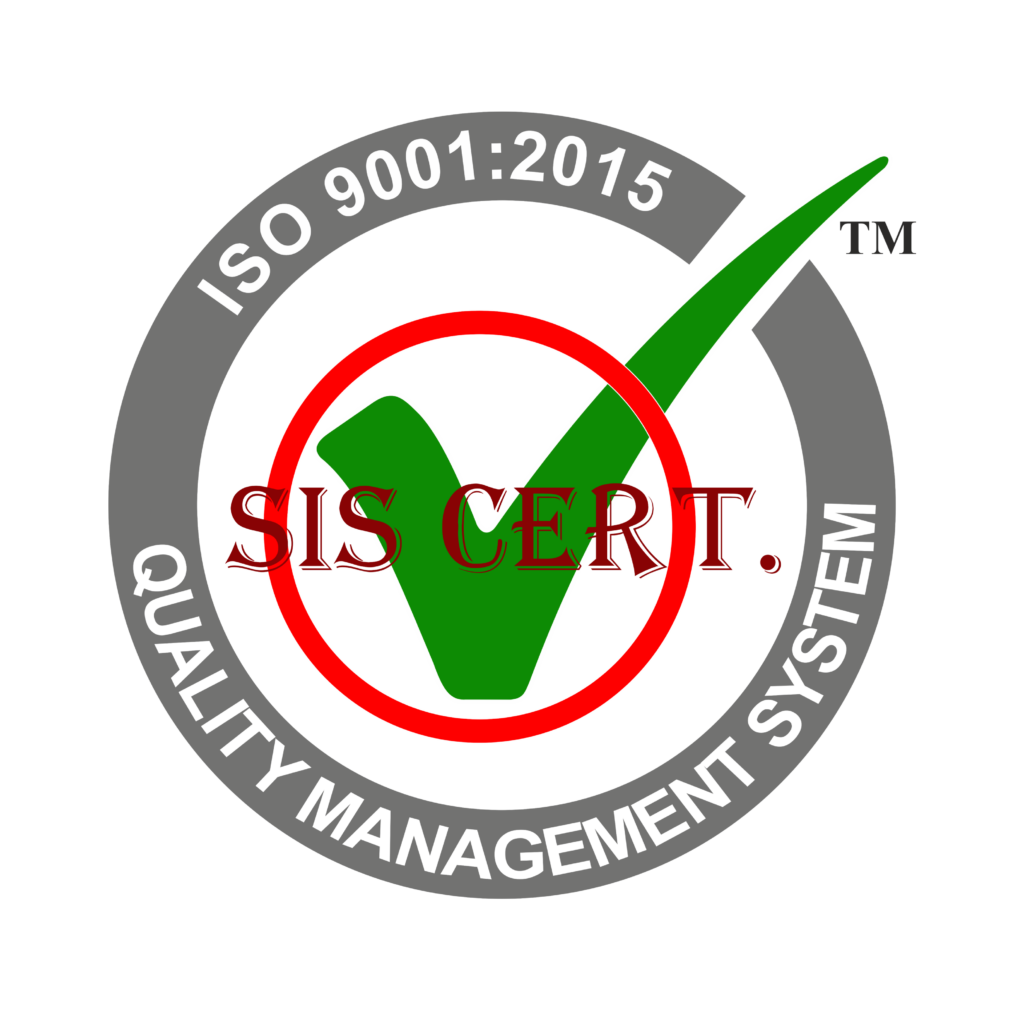Mechanical tubing is an essential component used in many industrial applications. It comes in a variety of shapes, sizes, and grades to meet the needs of any application. It is manufactured to ASTM A513 and ASTM A519 specifications and is available in hot-rolled/finished seamless, cold-drawn seamless, 4140 alloy, and drawn-over-mandrel tubing.
It offers precise dimensional control, tight corners, and uniform tolerances for a variety of uses. Mechanical tubing is used in bicycle frames, lawn mower handles, and high strength industrial applications.
Key Takeaways
- Mechanical tubing is manufactured to ASTM A513 and ASTM A519 specifications.
- Common types of mechanical tubing include Drawn Over Mandrel tubing (DOM), Hot Rolled/Finished Seamless tubing (HRS), Cold Drawn Seamless tubing (CDS), Hot Rolled or Cold Rolled Electric Weld tubing (HREW/CREW), and 4140 Alloy tubing.
- Mechanical tubing can be produced to customer requirements and is ordered by outside dimension (OD) and gauge/wall thickness or by OD and inside dimension (ID).
- Available shapes for mechanical tubing include square, rectangle, round, and custom shapes (large quantities required).
What is Mechanical Tubing
Mechanical tubing is a type of tubing manufactured to ASTM A513 and ASTM A519 specifications. It is often used in industrial applications such as bicycle frames, lawn mower handles, and high strength machines. The advantages of mechanical tubing include precise dimensions, tight corners, minimal downstream processing, and a wide variety of shapes and finishes.
The manufacturing process involves rolling flat steel into a finished size and shape. An electric resistance weld is then used to create the seam. The outside weld bead is removed to achieve a smooth surface. This process is in contrast to other types of tubing which may be cast or machined.
Common uses for mechanical tubing include automotive, construction, and manufacturing industries. The market for mechanical tubing is expected to remain strong with increasing demand from various industries.
ASTM A513 and ASTM A519 specifications
Although mechanical tubing is manufactured to ASTM A513 and ASTM A519 specifications, there are several differences between the two.
ASTM A513 offers advantages such as precise dimensions and tight corners, as well as less processing and enhanced machinability.
ASTM A519 ensures consistent quality and performance, and offers customization options such as drawn over mandrel and cold drawn seamless tubing.
The manufacturing process of mechanical tubing begins with flat steel and is rolled into a finished size and shape.
An electric resistance weld creates the seam and the outside weld bead is removed.
Hot rolled and cold drawn seamless tubing are two common types of mechanical tubing.
Hot rolled seamless tubing is made to clean up at nominal size whereas cold drawn seamless tubing offers uniform tolerances and increased strength.
Alloy tubing, such as 4140 and 4130, is used for general-purpose applications and provides high tensile strength and toughness.
It can be used in various industries such as bicycle frames, lawn mower handles, and high strength industrial applications.
Customers also have the ability to customize their mechanical tubing to meet their project requirements.
Types Mechanical Tubing
Building on the advantages of ASTM A513 and ASTM A519 specifications, there are several types of mechanical tubing available for various applications. These include Drawn Over Mandrel (DOM) tubing, Hot Rolled/Finished Seamless (HRS) tubing, Cold Drawn Seamless (CDS) tubing, Hot Rolled or Cold Rolled Electric Weld (HREW/CREW) tubing, and 4140 Alloy tubing.
Depending on the application, mechanical tubing can be ordered by outside dimension (OD) and gauge/wall thickness or by OD and inside dimension (ID). Different shapes, such as square, rectangle, and round, are also available, as well as custom shapes for large quantities. When it comes to size range, square tubing can range from 0.500 to 2.500, rectangle tubing from 1.000 x 0.500 to 4.000 x 2.000, and round tubing from 0.125 OD to 26.000 OD.
Manufacturing of mechanical tubing involves particular processes and properties that can affect its fabrication and use. For instance, DOM has precise OD and ID tolerances and high weld strength, while CDS offers uniform tolerances, enhanced machinability, and increased strength compared to hot-rolled products. HRS is made to clean up at nominal size, and CREW is used for cosmetically appealing surfaces.
In terms of industry analysis, the Steel Tube Institute represents the majority of North America’s producers and provides customers with a reliable source for obtaining mechanical tubing.
All in all, mechanical tubing offers precision, reduced processing needs, and a variety of shapes and sizes to suit different applications.
Hot Rolled/Finished Seamless tubing (HRS)
Hot Rolled/Finished Seamless tubing (HRS) is a common type of mechanical tubing which is manufactured to meet ASTM A513 and ASTM A519 specifications. It is produced by heating a solid billet or bar and then rotary piercing it as it rotates on rollers.
HRS tubing is used where dimensional accuracy and surface finish are unimportant or secondary, and is favored for its cost-effectiveness, versatility, and machinability.
The size range for HRS tubing is wide, with a multitude of OD and wall thickness dimensions available. It is suitable for machined parts, paper, textile, steel mill rolls, automotive and transportation applications, and can be purchased through a variety of supplier options.
When machining HRS tubing, the proper tube size, finished part size, raw material tolerances, machining sequence, type of machining, and processing must be considered. Its surface finish is similar to other hot-worked steel products, and the range of sizes and grades is more restricted than cold finished tubing. Heat treating, holding or chucking, and whether the OD or ID will be machined all need to be determined.
Cold Drawn Seamless tubing (CDS)
Cold Drawn Seamless (CDS) tubing is a type of mechanical tubing made according to ASTM A513 and ASTM A519 specifications. It is produced by piercing hot billets and then rolling them into a finished size and shape. An electric resistance weld creates the seam, and the outside weld bead is removed to achieve a smooth surface. CDS tubing offers superior dimensional tolerances, material properties, and machining capabilities compared to other types of mechanical tubing.
The cold drawing process is essential in achieving desired dimensions and properties. It involves the use of a die and mandrel plug to reduce the outside and inside diameter, resulting in increased strength and hardness. The process also produces close dimensional tolerances, uniformity of micro-structure, and improved machinability.
CDS tubing is used in a variety of applications including bicycle frames, lawn mower handles, automotive and transportation components, and high strength industrial applications. It can be rolled into an assortment of sizes, shapes, and gauges to suit different end uses.
Supply chain optimization is possible with CDS tubing, as Metal Special offers customized cut lengths and various outside diameters and wall thicknesses. Technical advisors are available for any questions or assistance needed.
Hot Rolled or Cold Rolled Electric Weld tubing (HREW/CREW)
Transitioning from Cold Drawn Seamless tubing, Hot Rolled or Cold Rolled Electric Weld tubing (HREW/CREW) is an option for cost-effectiveness in applications that don’t require precise tolerances. Advantages of HREW/CREW tubing include its ability to be formed into a variety of shapes and sizes with minimal processing, and its improved ductility with closely controlled carbon steel grades. The manufacturing process of HREW/CREW tubing involves pickling the steel strip to remove scale, oiling it for a cleaner surface, and then forming it into a tubular shape with electric resistance welding.
Compared to other mechanical tubing types, HREW/CREW tubing has looser wall thickness tolerances and a wider range of mechanical properties. It can also be customized with various surface treatments, such as galvanized, hot rolled black, or pickled & oiled. Furthermore, it is available in a variety of lengths, ranging from 0.375 to 12.75 inches in outside diameter, and 0.028 to 0.625 inches in wall thickness.
4140 Alloy tubing
| Though less common than other types of tubing, 4140 Alloy tubing is an option for applications that require high tensile strength and toughness. It is produced per ASTM A513 Type 5 or ASTM A519 industry standards, and has superior strength and machinability. The wide range of sizes available makes it suitable for many applications. | Manufacturing Process | Machinability | Wide Range | Supply Chain |
|---|---|---|---|---|
| ASTM A513 Type 5 or ASTM A519 | High strength and machinability | OD & Wall Thickness Dimensions | Metal Special |
As a result, it can be used in bicycle frames, lawn mower handles, roll cages, and more. Metal Special streamlines the supply chain, and offers high-quality alloy tubing with on-time delivery. This makes it a great option for those looking for reliable material with a wide range of sizes.
Drawn Over Mandrel tubing (DOM)
Drawn Over Mandrel (DOM) tubing is a type of mechanical tubing manufactured to precise dimensions and high weld strength. It is produced according to the ASTM A513 specification and is the most cost-effective option due to minimal or no downstream processing.
The manufacturing process involves cold forming and welding coils of steel, then drawing or pulling the tube through a die to reduce the outside and inside diameter. DOM tubing offers benefits such as uniform wall thickness, concentricity, and machinability for a variety of applications, and it is available in a wide size range from 0.125 OD to 26.000 OD.
It has smooth and clean surfaces with close tolerances and excellent surface quality, making it ideal for precision applications. DOM tubing is also highly cost-effective, providing a great value for the money.
Benefits of Mechanical Tubing
Though mechanical tubing offers many advantages for various applications, the primary benefits are precision, less processing, and variety of shapes. The close dimensional tolerances of mechanical tubing minimize downstream processing, while the precise dimensions and tight corners provide uniformity. Additionally, mechanical tubing is available in a range of shapes, including round, rectangular, oval, trapezoidal, and tear-drop, with various surface finishes.
| Advantages | Precision | Processing Minimization | Shape Variety |
|---|---|---|---|
| Precision | �? | �? | �? |
| Processing Minimization | �? | �? | �? |
| Shape Variety | �? | �? | �? |
Thanks to these benefits, mechanical tubing is widely used in bicycle frames, lawn mower handles, and other industrial applications. With its endless possibilities, it is easy to see why mechanical tubing has become so popular. As we move forward, we will discuss the various applications of mechanical tubing.
Applications
Due to its precision, minimized processing, and variety of shapes, mechanical tubing is used in a wide range of applications. From bicycle frames, lawn mower handles, and high strength industrial applications, mechanical tubing is a versatile product. Its production process starts with flat steel, which is then rolled into a finished size and shape. An electric resistance weld is used to create the seam and the outside weld bead is removed to achieve a smooth surface.
The versatility of mechanical tubing is demonstrated by its endless applications. Mechanical tubing is available in round, rectangular, oval, trapezoidal, tear-drop, and other specialty shapes with various surface finishes. This allows it to be rolled into an assortment of sizes, shapes, and gauges to suit different end uses.
The mechanical tubing industry is represented by the Steel Tube Institute, which has a wide membership base. Customers can find a producer through this organization.
Frequently Asked Questions
What Is the Cost of Mechanical Tubing?
The cost of mechanical tubing depends on several factors, such as sourcing options, material specifications, weight considerations, sizing selection, and installation methods. Careful selection of these elements can help ensure a successful and cost-effective outcome.
Are There Any Additional Treatments Available for Mechanical Tubing?
Yes, additional treatments are available for mechanical tubing, such as heat treating, coating services, wall thickness control and quality assurance. Dimension control is also possible, providing customers with the highest quality tubing.
What Is the Lead Time for Delivery of Mechanical Tubing?
Are you looking for a reliable delivery of mechanical tubing with tensile strength, heat treatment, sizing options and corrosion resistance? We offer prompt delivery options to meet your needs!
Are There Any Special Requirements for Ordering Mechanical Tubing?
When ordering mechanical tubing, special requirements may include installation process, durability standards, specialty sizes, coating types, and heat treatments. It is important to ensure that all desired specifications are met before placing an order.
How Is Mechanical Tubing Tested for Quality?
Mechanical tubing is tested for quality through materials selection, safety standards, production methods, environmental impact, and welding processes. It is important to ensure that the tubing meets the highest standards of quality before it is put to use.
Conclusion
Mechanical tubing is an invaluable asset to many industries. This is due to its precise dimensions, tight corners, and uniform tolerances. Its versatile shapes and galvanized option make it an ideal choice for a range of applications.
As the old adage goes, “measure twice, cut once�?�?this same principle applies to the careful selection of mechanical tubing.


